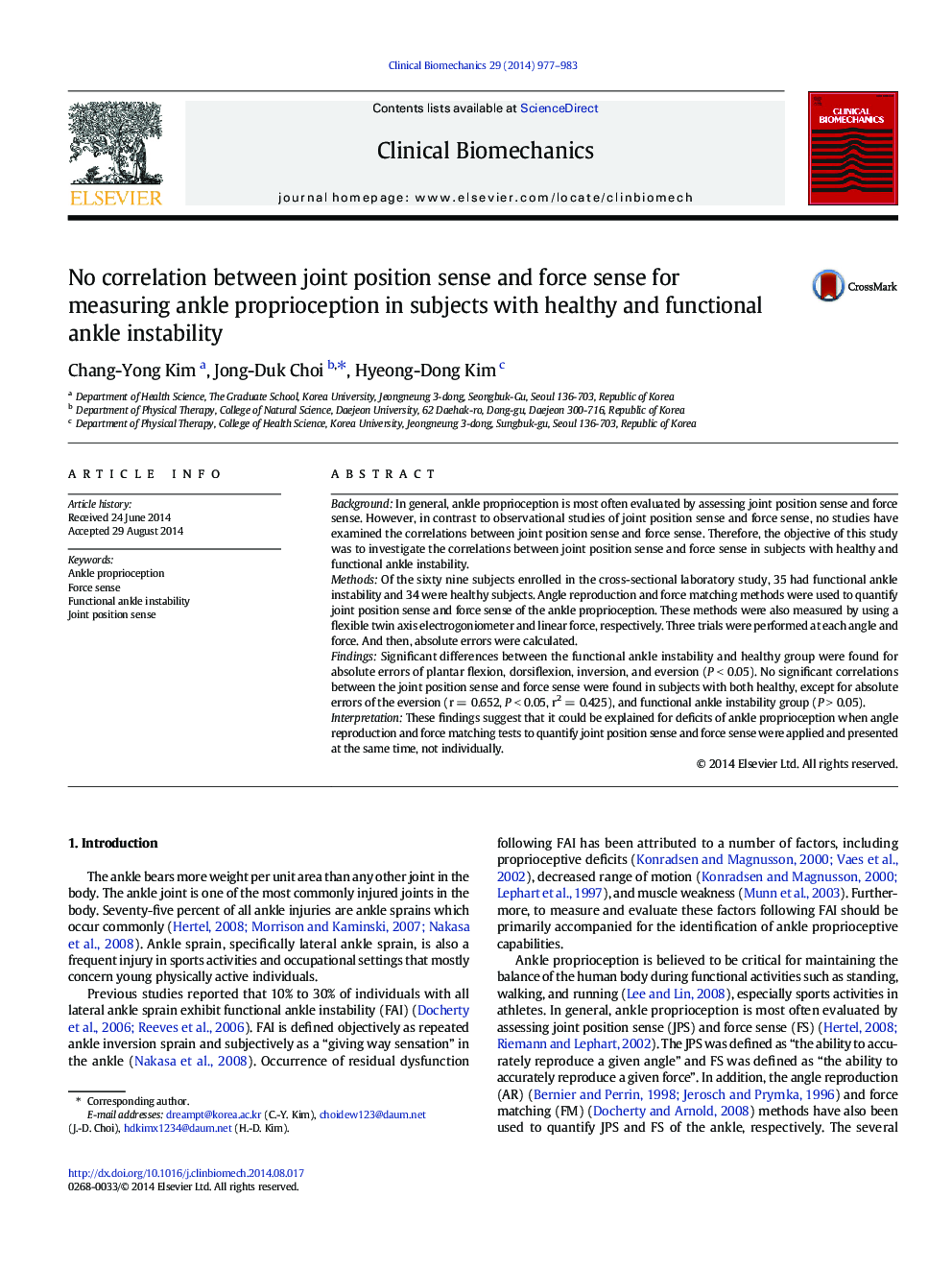| Article ID | Journal | Published Year | Pages | File Type |
|---|---|---|---|---|
| 4050296 | Clinical Biomechanics | 2014 | 7 Pages |
•Our study was the cross-sectional laboratory study.•Our study investigated the correlations between joint position sense and force sense.•Angle reproduction and force matching methods of ankle were used for this study.•No correlations between the joint position sense and force sense of ankle were found.•Joint position sense and force sense of ankle should be applied at the same time.
BackgroundIn general, ankle proprioception is most often evaluated by assessing joint position sense and force sense. However, in contrast to observational studies of joint position sense and force sense, no studies have examined the correlations between joint position sense and force sense. Therefore, the objective of this study was to investigate the correlations between joint position sense and force sense in subjects with healthy and functional ankle instability.MethodsOf the sixty nine subjects enrolled in the cross-sectional laboratory study, 35 had functional ankle instability and 34 were healthy subjects. Angle reproduction and force matching methods were used to quantify joint position sense and force sense of the ankle proprioception. These methods were also measured by using a flexible twin axis electrogoniometer and linear force, respectively. Three trials were performed at each angle and force. And then, absolute errors were calculated.FindingsSignificant differences between the functional ankle instability and healthy group were found for absolute errors of plantar flexion, dorsiflexion, inversion, and eversion (P < 0.05). No significant correlations between the joint position sense and force sense were found in subjects with both healthy, except for absolute errors of the eversion (r = 0.652, P < 0.05, r2 = 0.425), and functional ankle instability group (P > 0.05).InterpretationThese findings suggest that it could be explained for deficits of ankle proprioception when angle reproduction and force matching tests to quantify joint position sense and force sense were applied and presented at the same time, not individually.
